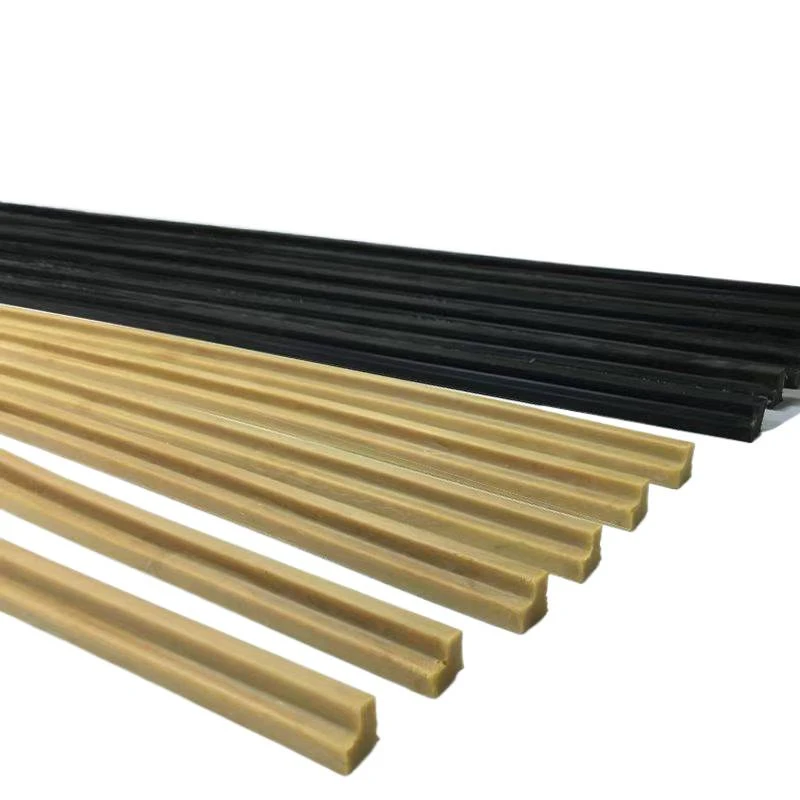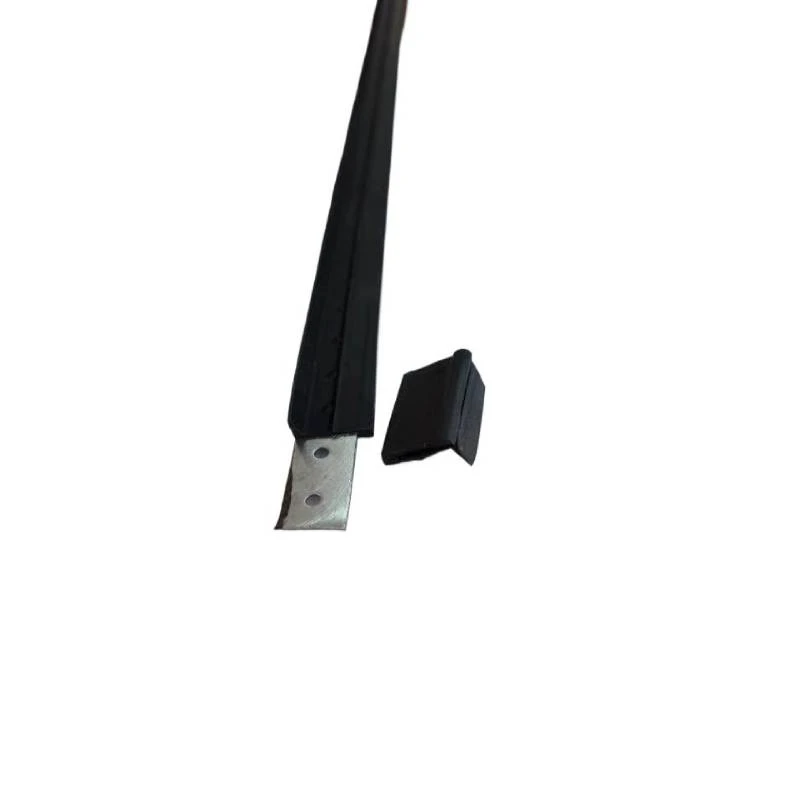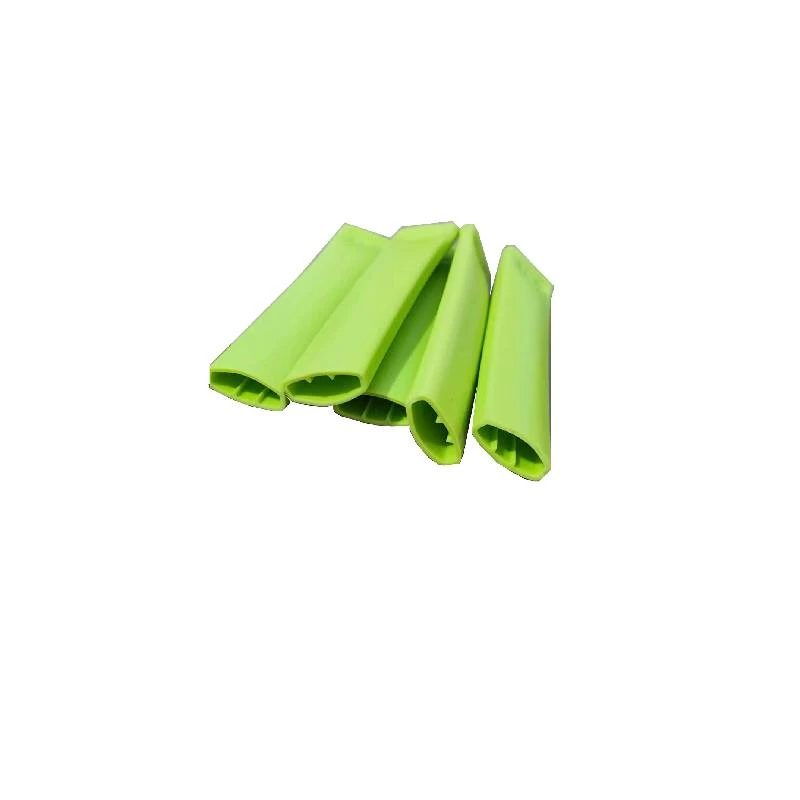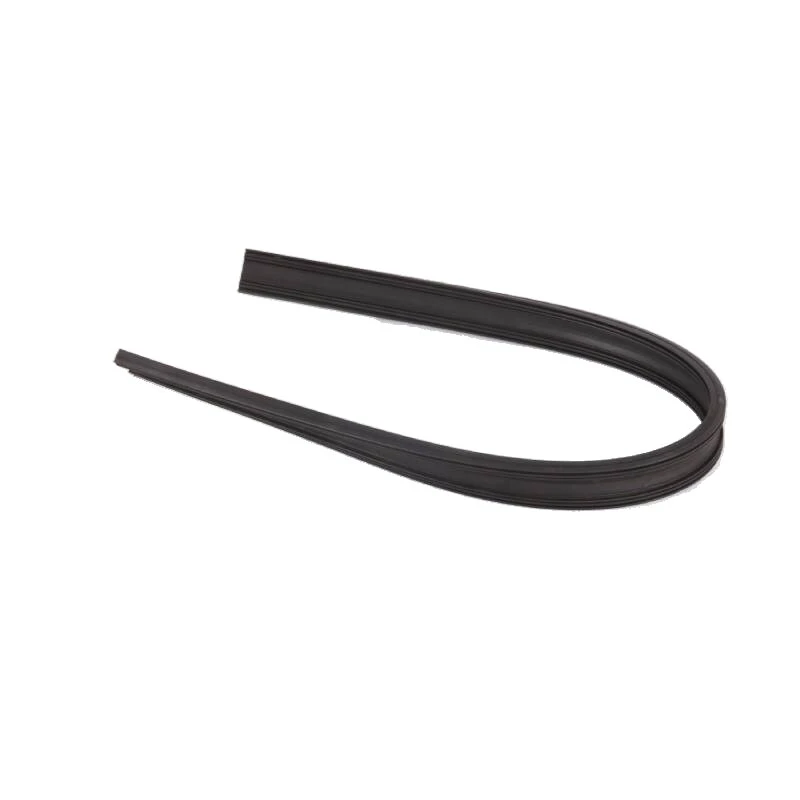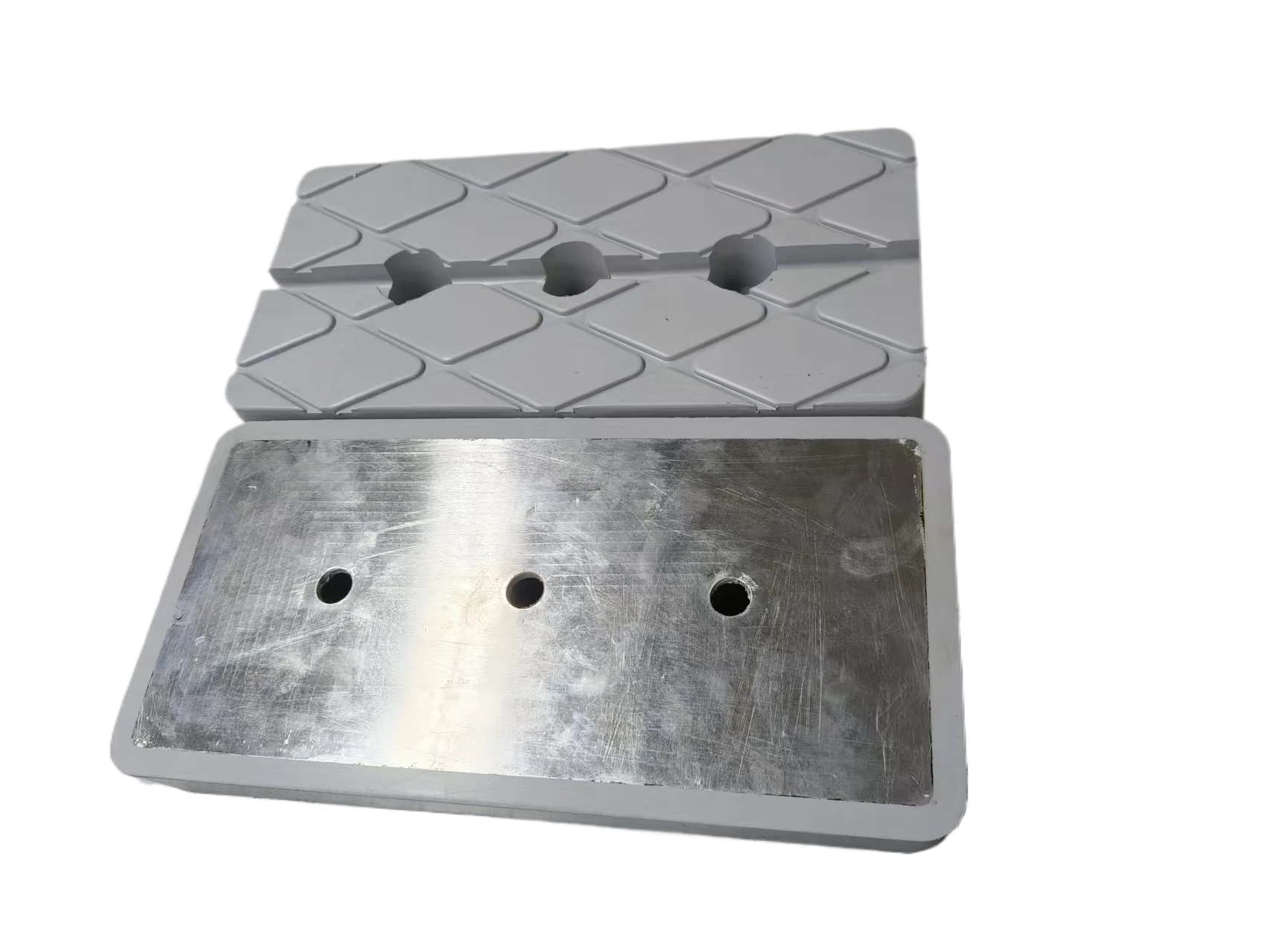Ultimate Rubber Shock-Absorbing Waterproof Bridge Covers
Introduction to Advanced Bridge Protection Solutions
In the demanding field of civil engineering, particularly bridge construction and maintenance, the longevity and structural integrity of infrastructure are paramount. Bridges are constantly subjected to dynamic loads, seismic activity, thermal expansion and contraction, and harsh environmental conditions. Protecting critical structural elements from these stressors is essential. This is where high-performance sealing and shock-absorbing solutions become indispensable. Our focus is on a leading-edge product designed to meet these challenges: the Ultimate Rubber Shock-Absorbing Waterproof Cover For Bridge Engineering. This innovative solution integrates superior material science with precision engineering to offer unparalleled protection, extending the operational lifespan of bridge structures and significantly reducing maintenance costs.
Engineered to provide a robust barrier against water ingress, chemical degradation, and dynamic vibrational forces, this product represents a significant advancement in bridge component protection. It is a vital component in ensuring the resilience and safety of modern bridge infrastructure across diverse applications.
Current Industry Trends in Bridge Engineering Materials
The bridge engineering sector is currently undergoing a transformative phase, driven by several key trends. There is an increasing global emphasis on sustainable infrastructure development, demanding materials with extended service life and reduced environmental impact. This translates into a strong preference for durable, recyclable, and low-maintenance components. Furthermore, advancements in smart infrastructure necessitate materials that can integrate with monitoring systems, although this product's primary role is passive protection.
Another significant trend is the growing demand for high-performance materials capable of withstanding extreme environmental conditions, including wider temperature fluctuations, increased UV radiation, and exposure to corrosive agents (e.g., de-icing salts, industrial pollutants). The rise in seismic activity concerns also pushes for enhanced shock absorption and vibration damping capabilities in bridge components. Materials science research is yielding new rubber compounds and composite polymers that offer superior resilience, elasticity, and chemical resistance compared to traditional options. The adoption of advanced manufacturing techniques, such as precision molding and vulcanization, allows for the creation of intricate designs that optimize performance and ease of installation. These trends collectively underscore the critical need for solutions like the Ultimate Rubber Shock-Absorbing Waterproof Cover For Bridge Engineering, which are designed to meet future infrastructure challenges head-on.
The drive for "lifecycle cost optimization" is also pivotal. Engineers are increasingly evaluating materials and systems not just on initial procurement cost but on total cost of ownership over the entire service life, including maintenance, repair, and replacement. This holistic approach favors products offering exceptional durability and performance, minimizing interventions and disruptions.
Manufacturing Process Flow and Material Science
The production of the Ultimate Rubber Shock-Absorbing Waterproof Cover For Bridge Engineering involves a multi-stage, meticulously controlled process to ensure the highest standards of quality and performance. Our commitment to precision engineering begins with raw material selection and extends through every phase of manufacturing.
Key Materials and Their Properties:
- High-Grade EPDM (Ethylene Propylene Diene Monomer) Rubber: Chosen for its exceptional resistance to ozone, UV radiation, weathering, and a wide temperature range (-40°C to +120°C). EPDM also exhibits excellent electrical insulation properties and good chemical resistance to many acids, alkalis, and ketones. Its inherent elasticity provides superior shock absorption.
- Natural Rubber (NR) Blends: Incorporated for enhanced tensile strength, tear resistance, and dynamic fatigue resistance. Natural rubber offers excellent resilience and low heat build-up under dynamic stress, crucial for sustained shock absorption.
- Specialized Polymer Additives: Custom-blended to improve specific properties such as flame retardancy, abrasion resistance, and adhesion to other materials, if applicable. These additives ensure the final product meets stringent performance requirements.
- Reinforcing Agents: Carbon black and silica are carefully dosed to enhance mechanical strength, hardness, and wear resistance without compromising elasticity.
Manufacturing Process Steps:
-
Material Compounding: Raw rubber polymers (EPDM, NR) are mixed with reinforcing fillers (carbon black, silica), vulcanizing agents (sulfur, peroxides), accelerators, antioxidants, and plasticizers in internal mixers or two-roll mills. This precise mixing process ensures homogeneity and optimal compound properties. The formulation is critical for achieving the desired mechanical, thermal, and chemical resistance characteristics.
Schematic Step 1: Raw Material Selection & Compounding
Rubber Polymers + Fillers + Additives → Homogeneous Rubber Compound -
Pre-forming (Extrusion/Calendering): The compounded rubber is either extruded through dies to create continuous profiles or calendered into sheets of specific thickness. This step shapes the rubber closer to the final product dimensions, reducing material waste and optimizing subsequent molding.
Schematic Step 2: Pre-forming
Rubber Compound → Extrusion/Calendering → Pre-shaped Blanks -
Precision Compression Molding: Pre-formed blanks are placed into high-precision molds, typically manufactured using CNC machining to ensure exact dimensions and complex geometries. Under high temperature (e.g., 150-180°C) and pressure, the rubber undergoes vulcanization. This chemical process cross-links the polymer chains, transforming the soft, plastic rubber into a durable, elastic thermoset material with improved mechanical properties, heat resistance, and solvent resistance.
Schematic Step 3: Compression Molding & Vulcanization
Pre-shaped Blanks + Heat + Pressure → Cured Rubber Cover (Final Shape) - Deflashing & Trimming: Excess material (flash) is carefully removed from the molded parts, and the covers are precisely trimmed to their final dimensions using automated or manual techniques. This ensures clean edges and accurate fits.
- Post-Curing (Optional): For some high-performance applications, a post-curing step in an oven may be employed to further stabilize the rubber and enhance its physical properties, especially for thick sections or specific rubber types.
- Quality Control & Testing: Each batch undergoes rigorous testing to verify conformance to technical specifications and industry standards.
- Packaging & Dispatch: Products are carefully inspected, packed, and prepared for shipment.
Testing Standards and Quality Assurance:
Our manufacturing facilities adhere to stringent quality management systems, including ISO 9001:2015. Products are tested against relevant international standards to ensure performance and reliability:
- ASTM D2000: Standard Classification System for Rubber Products in Automotive Applications (provides guidance for material specification).
- EN 1337-3: Structural bearings - Part 3: Elastomeric bearings (relevant for bridge bearing components, ensuring material suitability).
- AASHTO M251: Standard Specification for Plain and Fabric-Reinforced Elastomeric Bridge Bearings (ensures materials and properties are suitable for bridge applications).
- ISO 188: Rubber, vulcanized or thermoplastic - Accelerated ageing and heat resistance tests.
- ISO 1431: Rubber, vulcanized or thermoplastic - Resistance to ozone cracking.
- ISO 37: Rubber, vulcanized or thermoplastic - Determination of tensile stress-strain properties.
This meticulous process guarantees a service life typically ranging from 25 to 50 years, depending on specific environmental conditions and application demands.
Target Industries and Advantages:
The Ultimate Rubber Shock-Absorbing Waterproof Cover For Bridge Engineering finds critical applications across various heavy infrastructure and industrial sectors:
- Bridge Engineering: Primary application for protecting expansion joints, bearings, and abutment interfaces.
- Civil Construction: Used in large-scale building foundations, elevated structures, and pedestrian bridges.
- Railway Infrastructure: For track beds, bridge components, and vibration isolation in rail structures.
- Marine and Coastal Structures: Where saltwater corrosion and aggressive weather conditions are prevalent.
- Industrial Facilities: For vibration damping and sealing in heavy machinery foundations or large structural elements.
Demonstrable Advantages in Typical Scenarios:
- Enhanced Corrosion Resistance: By preventing water, de-icing salts, and chemical pollutants from reaching underlying steel or concrete, these covers significantly extend the lifespan of metallic components, reducing corrosion-related maintenance and energy consumption often associated with repairs.
- Superior Vibration Damping & Shock Absorption: The specialized rubber compound effectively dissipates kinetic energy from traffic loads, seismic events, and wind-induced vibrations, minimizing stress on structural elements and improving ride comfort on the bridge deck. This passively contributes to energy saving by reducing wear and tear.
- Watertight Sealing: Critical for preventing water ingress into bridge expansion joints, which can lead to freeze-thaw damage, rebar corrosion, and undermining of the bridge deck.

Figure 1: Cross-section of a typical high-performance rubber cover illustrating multi-layer construction.
Technical Specifications and Performance Parameters
The Ultimate Rubber Shock-Absorbing Waterproof Cover For Bridge Engineering is meticulously engineered to deliver superior performance. Below are key technical specifications and parameters that highlight its advanced capabilities, ensuring compliance with rigorous international standards for bridge components.
Product Specification Table:
| Parameter | Specification | Test Standard |
|---|---|---|
| Material Composition | High-grade EPDM/Natural Rubber Blend | Internal FTIR Analysis |
| Hardness (Shore A) | 60 ± 5 | ASTM D2240 |
| Tensile Strength (MPa) | ≥ 15 | ASTM D412 |
| Elongation at Break (%) | ≥ 350 | ASTM D412 |
| Compression Set (70h @ 100°C, %) | ≤ 20 | ASTM D395 Method B |
| Temperature Range (°C) | -40 to +120 | ISO 188 |
| Ozone Resistance (100 pphm, 72h) | No Cracks (Static & Dynamic) | ISO 1431-1 |
| Water Absorption (%) | ≤ 3 (24h @ 23°C) | ASTM D570 |
| UV Resistance | Excellent (no degradation after 5000h QUV) | ASTM G154 |
| Flame Retardancy | Self-extinguishing (specific grades available) | UL94 V-0 (for specific compounds) |
| Abrasion Resistance | Excellent (low volume loss) | ASTM D5963 (DIN 53516) |
| Service Life (Estimated) | 25-50 years, depending on application | Accelerated Ageing Data |
These specifications underscore the product's robustness and suitability for critical bridge infrastructure applications. The precise control over material formulation and manufacturing processes ensures that each cover performs consistently under stress.
Versatile Application Scenarios
The adaptability and superior performance of the Ultimate Rubber Shock-Absorbing Waterproof Cover For Bridge Engineering make it an ideal solution for a multitude of demanding scenarios within bridge and heavy civil construction.
- Bridge Expansion Joints: Crucial for accommodating thermal expansion and contraction, traffic-induced movements, and seismic shifts. These covers ensure a watertight seal while allowing necessary movement without compromising structural integrity or ride quality.
- Bridge Bearings Protection: Used as protective caps or enclosures around elastomeric or pot bearings to shield them from environmental factors (water, debris, UV) and physical damage, thereby extending the bearing's operational life.
- Abutment and Pier Interfaces: Applied at the transition points between bridge decks and abutments/piers to prevent water ingress, absorb vibrations, and accommodate minor differential movements, protecting the underlying concrete and reinforcement.
- Vibration Isolation in Bridge Decks: Strategically placed elements can damp vibrations induced by heavy traffic, contributing to overall structural health and reducing fatigue in materials.
- Protection of Utility Conduits: Can be designed to encapsulate and protect sensitive utility lines (electrical, data, gas) running through or under bridge decks from moisture, physical impact, and vibration.
- Seismic Isolation Systems: Integral components in certain seismic isolation systems, providing resilience and energy dissipation during earthquake events to minimize structural damage.

Figure 2: Illustrative example of an expansion joint protected by a robust rubber cover.
These varied applications demonstrate the product's essential role in modern bridge engineering, offering a reliable barrier and resilient interface for critical structural components.
Technical Advantages and Performance Edge
The distinct technical advantages of the Ultimate Rubber Shock-Absorbing Waterproof Cover For Bridge Engineering position it as a superior choice for demanding bridge infrastructure projects.
- Exceptional Durability and Longevity: Engineered from advanced polymer blends, these covers resist degradation from UV radiation, ozone, aggressive chemicals (e.g., de-icing salts), and extreme weather. This ensures a prolonged service life, minimizing replacement cycles and reducing long-term costs.
- Superior Waterproofing Capability: The precision-molded design and high-density rubber composition create an impenetrable barrier against water ingress, protecting sensitive steel components and concrete from moisture-induced corrosion, freeze-thaw cycles, and rebar deterioration.
- Optimized Shock Absorption and Vibration Damping: The elastomeric properties of the material effectively absorb and dissipate kinetic energy from vehicular traffic, seismic events, and structural movements. This reduces dynamic stresses on the bridge structure, mitigates fatigue, and enhances the overall structural resilience and comfort.
- Temperature Stability: Maintains performance characteristics across a broad temperature range, from frigid winters to scorching summers (-40°C to +120°C), preventing material embrittlement or softening that could compromise function.
- Chemical and Oil Resistance: Specific rubber formulations offer enhanced resistance to a variety of industrial chemicals, oils, and automotive fluids, making them suitable for environments where such exposures are possible.
- Low Maintenance Requirements: Due to their inherent resistance to environmental factors and physical wear, these covers require minimal inspection and maintenance compared to conventional solutions, contributing to lower operational expenses over the bridge's lifespan.
- Ease of Installation: Designed for straightforward installation, reducing labor costs and project timelines. Custom profiles and attachment mechanisms can further simplify deployment.
These combined attributes provide a robust and cost-effective solution for safeguarding critical bridge infrastructure, ensuring operational continuity and public safety.
Vendor Comparison: FY Gasket vs. Industry Standards
When selecting crucial components for bridge engineering, a thorough comparison of vendor capabilities and product specifications is essential. FY Gasket's Ultimate Rubber Shock-Absorbing Waterproof Cover For Bridge Engineering consistently outperforms standard offerings, particularly in critical areas of performance and longevity.
Product Comparison Table:
| Feature/Parameter | FY Gasket (Our Product) | Standard EPDM/Neoprene Covers | Advanced Polymer Composites (Alternative) |
|---|---|---|---|
| Material Composition | Proprietary EPDM/NR Blend | Generic EPDM or Neoprene | Fiber-reinforced thermosets |
| Shock Absorption | Excellent (Optimized damping) | Good (Basic damping) | Moderate (Stiffer, less elastic) |
| Waterproofing | Superior (Precision sealed profile) | Good (Can degrade over time) | Excellent (If well-sealed, but less flexible) |
| Temperature Range | -40°C to +120°C | -30°C to +100°C | -50°C to +150°C (but less elastic) |
| UV & Ozone Resistance | Excellent (Long-term stability) | Good (Can show surface cracking) | Very Good (If surface coated) |
| Chemical Resistance | Very Good (Tailored compounds) | Moderate to Good | Excellent (For specific chemicals) |
| Service Life (Estimated) | 25-50 years | 15-25 years | 20-40 years (if undamaged) |
| Cost-Effectiveness (Lifecycle) | High (Lower total cost of ownership) | Medium (Higher maintenance/replacement) | High (High initial, lower maintenance) |
This comparison clearly illustrates the technical superiority of FY Gasket’s product, offering a balanced combination of high-performance attributes, extended service life, and optimized lifecycle cost-effectiveness, positioning it as a leading solution for bridge infrastructure protection.
Customized Solutions for Unique Bridge Challenges
Recognizing that every bridge project presents unique challenges, FY Gasket specializes in providing tailored solutions for the Ultimate Rubber Shock-Absorbing Waterproof Cover For Bridge Engineering. Our engineering team works closely with clients from initial concept to final deployment, ensuring that the chosen cover perfectly aligns with specific structural requirements, environmental conditions, and operational parameters.
- Custom Dimensions and Profiles: We can manufacture covers in a vast range of widths, lengths, and complex cross-sectional profiles to fit non-standard expansion joints, unique bearing geometries, or bespoke interface designs. This ensures a seamless and effective integration with existing or new bridge structures.
- Specialized Material Compounds: For projects exposed to extreme conditions (e.g., highly corrosive industrial environments, specific chemical spills, or exceptionally broad temperature fluctuations), we can formulate custom rubber compounds with enhanced resistance properties beyond our standard offerings. This includes specific flame-retardant, anti-static, or oil-resistant grades.
- Integrated Attachment Mechanisms: Customization extends to the design of integral attachment features, such as pre-drilled holes for specific anchor systems, molded-in metal inserts for mechanical fastening, or specialized interlocking profiles to simplify installation and ensure robust connection to the bridge structure.
- Performance Optimization: Through advanced finite element analysis (FEA) and material simulation, we can optimize the cover's design to achieve specific shock absorption, waterproofing, or flexibility targets, ensuring peak performance for the intended application.
Our commitment to customized solutions ensures that even the most complex or unique bridge engineering requirements are met with precision-engineered, high-performance covers, delivering optimal protection and longevity.
Application Case Studies and Customer Feedback
FY Gasket has a proven track record of delivering high-performance sealing and protection solutions for critical infrastructure projects worldwide. Our expertise, combined with the superior performance of the Ultimate Rubber Shock-Absorbing Waterproof Cover For Bridge Engineering, has garnered significant positive feedback from our clients.
Case Study 1: Major Coastal Highway Bridge Expansion Joint Protection
A key highway bridge spanning a saltwater estuary in a high-traffic urban area faced recurring issues with its expansion joints. The existing covers degraded rapidly due to aggressive saltwater spray, UV exposure, and heavy vehicle loads, leading to water ingress and corrosion of the steel reinforcement below. FY Gasket provided custom-engineered EPDM covers with enhanced anti-ozone and anti-UV additives. Outcome: Post-installation, the bridge experienced a dramatic reduction in water seepage into the expansion joint troughs. After 5 years, detailed inspections showed no signs of material degradation, cracking, or loss of elasticity, far exceeding the performance of previous solutions. The client reported significant savings in maintenance costs and extended the projected lifespan of the bridge deck. "The solution provided by FY Gasket has exceeded our expectations in terms of durability and performance in this harsh coastal environment," commented the Project Lead Engineer.
Case Study 2: Railway Viaduct Vibration Damping System
A modern high-speed railway viaduct required advanced vibration isolation at its pier-deck interfaces to mitigate noise and structural fatigue. Standard rubber pads proved insufficient for the dynamic loads and high-frequency vibrations. FY Gasket designed a multi-layered cover system, integrating specific natural rubber blends optimized for dynamic energy absorption, paired with a robust EPDM outer layer for environmental protection. Outcome: Post-commissioning, acoustic monitoring and structural health assessments confirmed a measurable reduction in vibration transmission to the piers and surrounding areas. The client, a major railway infrastructure provider, praised the custom solution for its effectiveness and adherence to stringent railway standards. They noted a significant improvement in the structural fatigue life prediction for the viaduct.
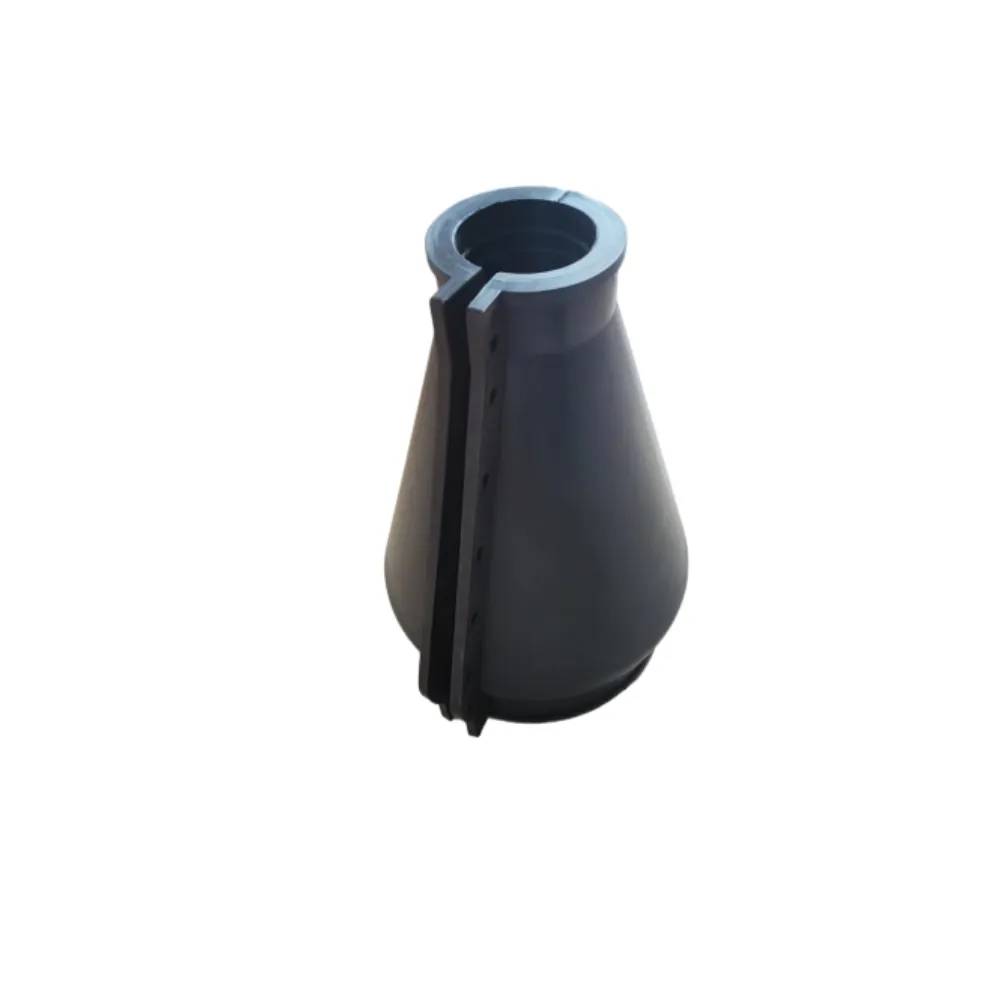
Figure 3: Installation of a bespoke rubber cover on a bridge expansion joint.
Frequently Asked Questions (FAQ)
Q1: What is the typical service life of the Ultimate Rubber Shock-Absorbing Waterproof Cover?
A1: Our covers are designed for exceptional longevity, with an estimated service life of 25 to 50 years, depending on the specific environmental conditions, traffic loads, and proper installation. Our advanced materials and manufacturing processes contribute to this extended lifespan.
Q2: Can these covers be customized for non-standard bridge dimensions or unique requirements?
A2: Absolutely. Customization is a core offering. We can engineer covers with specific dimensions, profiles, material compounds, and attachment features to perfectly match the unique needs of your project. Our technical team works closely with clients for bespoke solutions.
Q3: How do these covers perform under extreme temperature fluctuations?
A3: Our specialized EPDM/Natural Rubber blend maintains its flexibility and sealing properties across a wide temperature range, typically from -40°C to +120°C. This ensures consistent performance in diverse climatic conditions without cracking or softening.
Q4: What maintenance is required for these covers?
A4: Due to their robust design and material properties, these covers require minimal maintenance. Routine visual inspections are recommended as part of overall bridge maintenance, but specific interventions for the cover itself are rarely needed.
Q5: Are these products environmentally friendly?
A5: We prioritize sustainable practices. Our manufacturing processes adhere to environmental standards, and the extended service life of our products significantly reduces waste and the need for frequent replacements, contributing to lower environmental impact over the long term.
Logistics, Warranty, and Customer Support
Lead Time and Fulfillment:
FY Gasket understands the critical timelines in bridge construction projects. Our standard lead time for off-the-shelf Ultimate Rubber Shock-Absorbing Waterproof Cover For Bridge Engineering products is typically 2-4 weeks, depending on order volume. For customized solutions, lead times will be provided upon detailed project scope agreement, usually ranging from 6-12 weeks to account for design, mold fabrication, and specialized production. We maintain robust supply chain management to ensure timely delivery and offer expedited shipping options for urgent requirements.
Warranty Commitments:
FY Gasket stands behind the quality and performance of our products. The Ultimate Rubber Shock-Absorbing Waterproof Cover For Bridge Engineering comes with a standard 10-year limited warranty against manufacturing defects and material failures under normal operating conditions. Specific project warranties for extended durations can be negotiated for large-scale infrastructure projects, reflecting our confidence in the product's long-term durability. Our warranty ensures peace of mind and commitment to our clients' investment.
Dedicated Customer Support:
Our commitment extends beyond product delivery. FY Gasket provides comprehensive pre-sales and post-sales support, including:
- Technical Consultation: Expert engineers available to assist with product selection, design integration, and material recommendations for specific project challenges.
- Installation Guidance: Detailed installation manuals and, upon request, on-site technical assistance or training for installation teams.
- Responsive Troubleshooting: A dedicated support team to address any queries or issues that may arise during installation or operation.
- Quality Assurance Documentation: Provision of comprehensive test reports, material certifications, and compliance documentation.
We pride ourselves on being a reliable partner, offering expert advice and unparalleled support throughout the entire project lifecycle.
Conclusion
The Ultimate Rubber Shock-Absorbing Waterproof Cover For Bridge Engineering by FY Gasket represents the pinnacle of protective solutions for modern bridge infrastructure. By combining advanced material science, precision manufacturing, and a deep understanding of engineering demands, this product offers unmatched durability, waterproofing, and vibration damping capabilities. Its ability to extend the lifespan of critical bridge components, reduce maintenance overheads, and enhance structural resilience makes it an indispensable asset for engineers and project managers globally. FY Gasket's commitment to quality, customization, and comprehensive customer support ensures that our clients receive not just a product, but a complete, reliable, and future-proof solution for their most challenging bridge projects.
Citations
- ASTM International. "ASTM D2000 - Standard Classification System for Rubber Products in Automotive Applications." Available at: www.astm.org
- European Committee for Standardization. "EN 1337-3: Structural bearings - Part 3: Elastomeric bearings." Available at: www.cencenelec.eu
- American Association of State Highway and Transportation Officials. "AASHTO M251 - Standard Specification for Plain and Fabric-Reinforced Elastomeric Bridge Bearings." Available at: www.transportation.org
- International Organization for Standardization. "ISO 9001:2015 - Quality management systems - Requirements." Available at: www.iso.org
- Rubber Manufacturers Association. "Rubber Handbook for Mechanical Engineers." Available at: www.rma.org (Hypothetical reference for general rubber properties)
-
Plastic Pelton Wheel – Lightweight, Cost-Effective Hydropower SolutionsNewsNov.24,2025
-
Durable and Cost-Effective Plastic Sheave Wheels for Modern IndustryNewsNov.24,2025
-
Plastic Spoke Wheel – Lightweight, Durable Wheels for Global Mobility SolutionsNewsNov.24,2025
-
Plastic Stem Casters: Durable, Cost-Effective Mobility Solutions for Every IndustryNewsNov.24,2025
-
Plastic Wheel Roller: Durable, Lightweight Solutions for Modern IndustryNewsNov.24,2025
-
Plastic Wheelchair Wheels: Durable, Affordable Mobility Solutions WorldwideNewsNov.24,2025
-
Small Plastic Casters – Durable, Lightweight Wheels for Global MobilityNewsNov.24,2025




